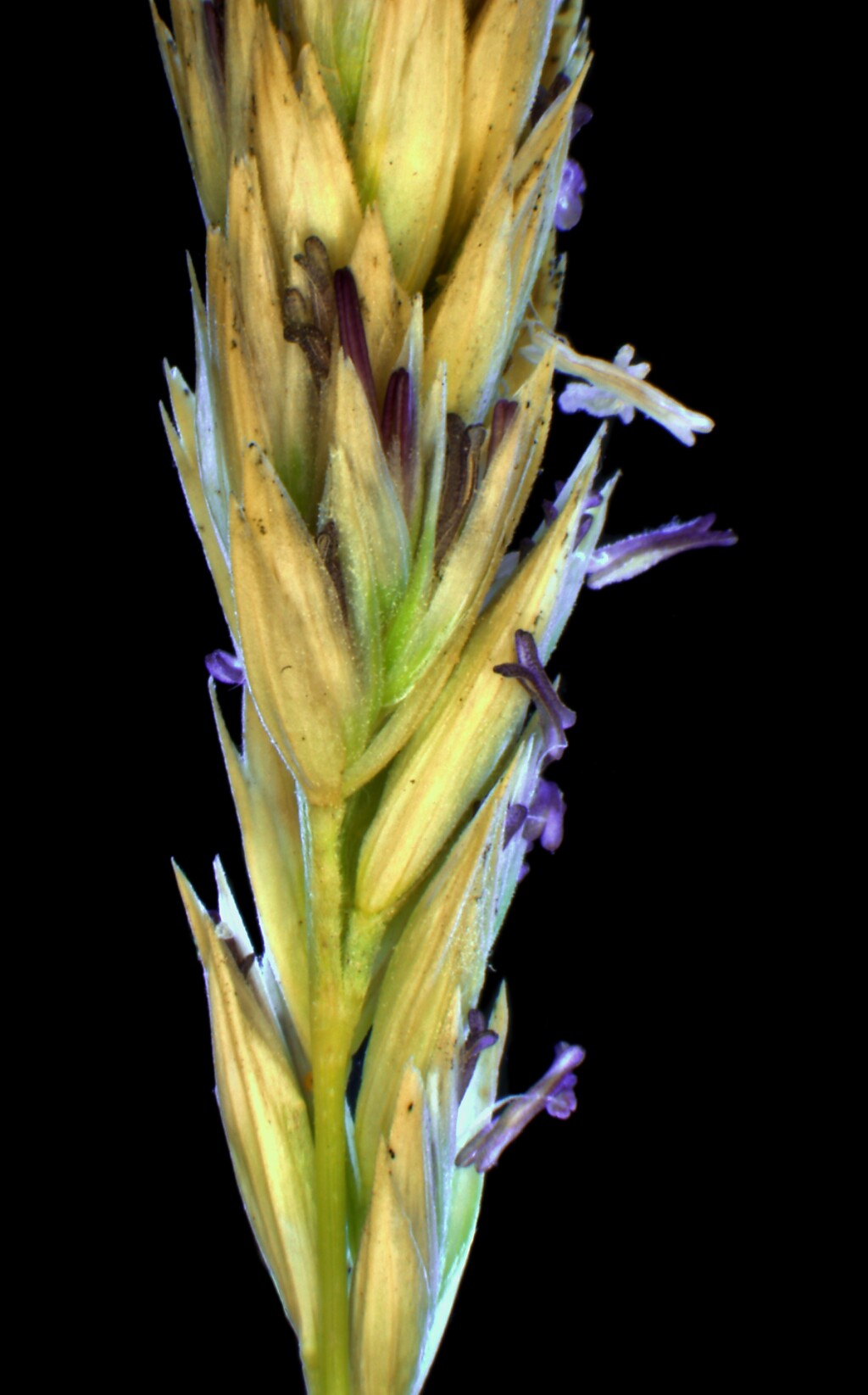Poa billardierei
(Spreng.) St-YvesGlabrous, coastal perennial to 60 cm high, forming tussocks but with an erect, branching rhizome. Leaf-blades closely folded, subterete, to 50 cm long and c. 1 mm diam., smooth on the outer surface, densely scabrous, pubescent within, pungently pointed at the apex; sheaths smooth, closely sheathing stem; ligules thinly membranous, to 6 mm long. Panicle dense, lanceolate or spike-like, to 10 cm long, overtopped by leaves. Spikelets 3–5-flowered, 12–16 mm long, pale straw-coloured; glumes subequal, 9–12 mm long, strongly keeled, scabrous along the keels, rarely shortly pubescent; lemmas narrow-lanceolate, 7–11 mm long, 5–7-nerved, strongly keeled, acute, unawned, smooth to minutely scabrous-pubescent; callus virtually glabrous but rachilla segments with copious white silky hairs; palea subequal to lemma. Flowers mainly Sep.–Oct.
GleP, Brid, VVP, GipP, OtP, WaP, EGL, WPro, OtR. Also WA, SA, NSW, Tas. New Zealand. Of scattered occurrence on coastal sand dunes from near Nelson in the far south-west to the NSW border, but infrequently collected in recent times and possibly being displaced by the superficially similar, introduced Marram-grass (Calamagrostis arenaria (L.) Roth).
Walsh, N.G. (1994). Poaceae. In: Walsh, N.G.; Entwisle, T.J., Flora of Victoria Vol. 2, Ferns and Allied Plants, Conifers and Monocotyledons, pp. 356–627. Inkata Press, Melbourne.
 Spinning
Spinning


